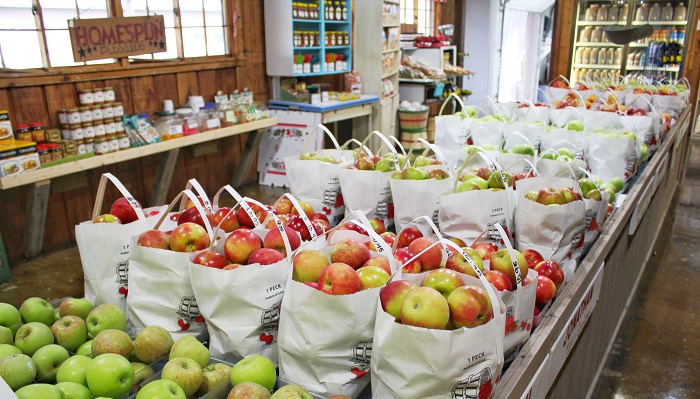April produce inflation continues upward climb

The most recent produce sales report published by IRI, 210 Analytics and the International Fresh Produce Association (IFPA) showed that inflationary trends in the retail sector have continued into April, with total purchase gains coming mainly from this price inflation, while unit sales are down compared to the same period in 2021.
The monthly report also showed that there are opportunities for produce in consumer trends showing more individuals are reducing restaurant visits, hence a need for salad kits, fruit spreads and more.
The price per unit across all foods and beverages in the IRI-measured multi-outlet stores, including supermarkets, club, mass, supercenter, drug and military, accelerated further to an increase of 10.7% in the four weeks ending April 24, 2022 (“April”) versus the same four weeks in 2021.
Inflation was in the double digits in the center of the store as well as in perishables and compared to April 2019, prices across all foods and beverages were up 21.3 percent.
Fresh produce prices were also up from last year, at +8.7 percent level on a per unit basis and +10.1 percent on a per pound basis. The increases are predominantly driven by fruit that had double-digit inflation once more in both the four-week and 52-week view.
The four April 2022 weeks brought $56.2 billion in total food and beverage sales, which was up from $54.3 billion in March — likely boosted by the later Easter/Passover timing. Compared with April 2021, dollars increased 8.0 percent and compared with pre-pandemic, April sales were up 22.0 percent.
Inflation played a significant role with year-on-year unit sales down 2.4 percent. Perishables, including produce, seafood, meat, bakery and deli, had slightly above average growth, at +7.6 percent. Frozen foods had the highest increase versus pre-pandemic, at +29.5 percent.
Easter spending habits weigh in
The shift in dates for the Easter/Passover holiday meant that holiday purchase dollars also shifted from March to April, and from the first to the second quarter. Easter is a big selling season for fresh produce, and was the most disrupted of major holidays in 2020 when states went into lock down.
In its Easter 2022 overview, the National Retail Federation found that consumer engagement was nearly back to pre-pandemic levels, with 80 percent celebrating.
Average per person spending on all holiday-related purchases was $170 — a three-year low. Amid 40-year high inflation, consumers expected to spend more on food, but pulled back on spending in all other categories, including clothing, gifts and decorations, the report clarified.
Inflation not only took the headlines for the Easter holiday, but also dominated everyday spending.
“The April 2022 IRI survey of primary shoppers found that 90 percent of consumers believe food prices are somewhat or a lot higher than last year, of whom 96 percent are concerned about it,” shared Jonna Parker, Team Lead Fresh for IRI.
“This includes 53 percent who are extremely concerned — the first time this number has moved past half of the population. This compares to 23 percent of consumers being extremely concerned over coronavirus in this same survey — meaning inflation has a far greater grip on the nation’s food spending than COVID-19 at this point in time.”
Takeaways from the April IRI survey
35 percent of consumers are planning on cutting back on restaurant spending, however, that may not automatically translate into fewer restaurant visits. In fact, the consumer estimated share of meals prepared at home dropped slightly below 80 percent, to 78.8 percent.
“There is an opportunity here for fresh produce,” said Parker. “Items like salad kits, fruit or veggie platters or fresh produce snack items are ideally positioned to complement takeout food such as pizza, burgers, etc. In this way, retail may not get all the dollars, but remains in the game.”
Opportunities for retail remain the home-cooked meal with 91 percent of consumers expecting they will cook from scratch as much (72 percent) or more often (19 percent) as last year. Another opportunity is renewed in-person socializing with friends and family with 15% expecting to entertain more.
“We absolutely see this in the numbers,” added Parker. “For several months now, sales of fruit and vegetable trays and platters have been among the growth leaders. In-stock availability, a variety of sizes and playing into the hot streak of charcuterie are great ways to grow sales.”
To read the full report visit the IFPA website.












































